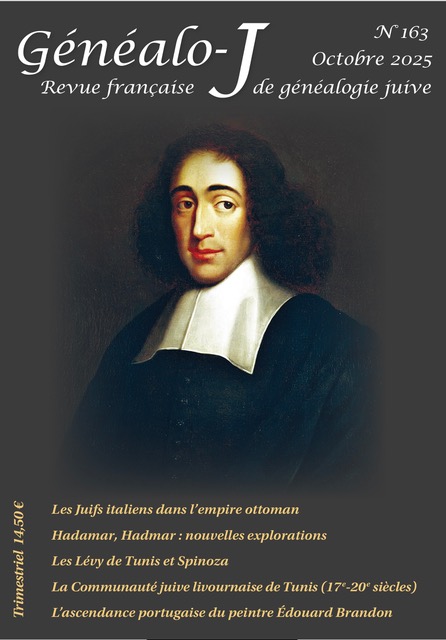
Alexandre Beider
Italian Jews in the Ottoman Empire
The ethno-cultural entity of the “Ottoman Jews” who considered themselves Sephardic Jews formed over centuries. The article shows the extent of migrations from Italy that contributed to the formation of this entity by illustrating their volume and describing the chronology and provinces of origin of these migrations. The article présents the historical elements in our possession about Italian Jewish migration to the Ottoman Empire and discusses the surnames revealing the Italian origin of the paternal line of certain families.
Pierre-André Meyer
Hadamar, Hadmar: New Explorations and a Misleading Name
Extending a study on the Hadamar(d) family published in 1994, the author set out to search for descendants of this Metz family, who were, for him, “unknown destinies.” This research, helped by the online availability of civil records and the constant enrichment of major genealogical databases accessible via the Internet, led him to western France but also to faraway Russia, where a Hadamar settled in the 19th century. But is it enough to bear this name to be a descendant of the Hadamars from Metz? The example of the Hadamars of Réunion shows us that this is not always the case!
Denis Lévy
The Levy of Tunis and Spinoza. Genealogy of a Legend
The Levy family of Tunis have always claimed a family link to the great philosopher Baruch Spinoza. Do they descend from his sister Miriam and her husband Samuel de Casseres, a rabbi in Amsterdam? Or from his great-uncle Abraham Espinoza, a merchant in Nantes and Amsterdam? Both? The author considers different paths, none are conclusive, but a bundle of converging clues allows us to glimpse a reality behind the legend. The study offers an opportunity to describe Spinoza’s relatives in Lisbon, Nantes, Amsterdam, Salé and Gibraltar.
Gilles Boulu, Liliane et Alain Nedjar
The Livornese Jewish community of Tunis. Marriages, Genealogies Society (17th-20th centuries
Ten years after the publication of the book The Portuguese Jewish Community of Tunis, known as Livornese or Grana, Marriage Registers, the authors return with a more ambitious work, allowing a detailed study of these families over three centuries. This work by Gilles Boulu, Liliane and Alain Nedjar explores the Livornese Jewish Community of Tunis (17th-20th centuries), based on 2000 marriage contracts (1788-1881) and multiple sources (Ketubot from Livorno, French Consulate archives, press, databases) and provides a genealogical and sociological analysis.
Jacques Gerstenkorn
o each generation its synagogue: a note on the Portuguese ancestry of the painter Édouard Brandon
Édouard Brandon (1831-1897), was in France, in the second half of the 19th century, along with Édouard Moyse and Alphonse Lévy, one of the leading proponents of the “Jewish genre” in painting. Year after year, at the Salon, he presented scenes with “Jewish subjects” at the Salon, with a preference for Portuguese synagogues in Paris (Lamartine), but also in Brussels or Amsterdam. Far from being a matter of chance, this synagogal tropism was the expression of a family tradition, born in Saint-Esprit-lès-Bayonne in the 18th century, which genealogical research has helped to reveal.